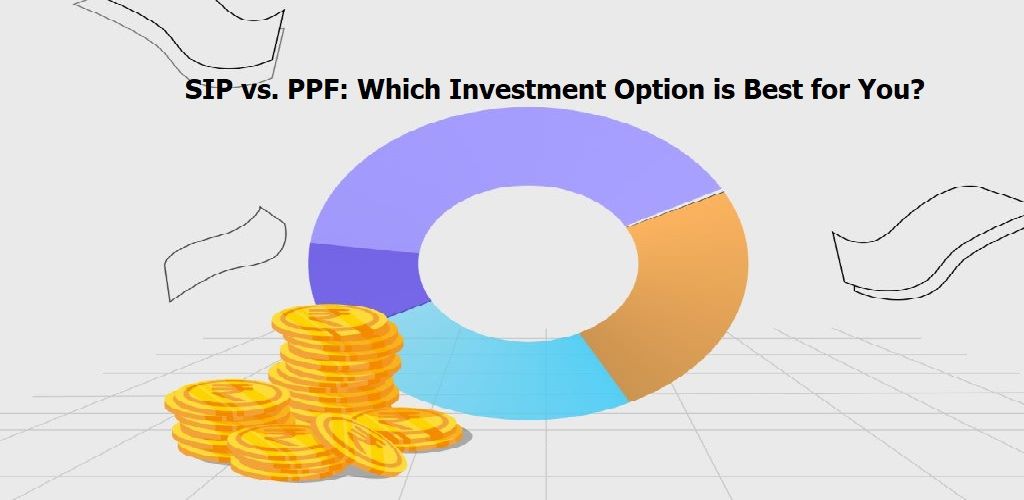The National Pension System (NPS) is gradually gaining popularity due to its cost-effectiveness and various tax benefits. However, the array of account choices within the NPS often leads to confusion for investors.
When opting to invest in the National Pension System, it is necessary to initiate the process by opening a Tier I account before contemplating the establishment of a Tier II account. The distinctions between Tier 1 and Tier 2 NPS accounts are substantial. Tier 1 serves as the primary account designed for long-term retirement savings, whereas Tier 2 provides greater flexibility in terms of savings and withdrawals, resembling a voluntary savings account.
It’s common for individuals to question the purpose of having two distinct accounts and why the Tier 2 account cannot be established independently. In the subsequent sections of this blog post, we will delve into the advantages offered by both accounts. Additionally, we will explore the considerations involved in deciding whether to opt for a Tier 2 account at a later stage.
What are Tier 1 and Tier 2 in NPS?
As previously noted, Tier 1 and Tier 2 represent two distinct NPS accounts with a comparable structure. Both accounts share similar charges and offer a choice of fund schemes. It is important to highlight that possessing a Tier 1 account is a prerequisite for opening an NPS Tier 2 account.
The Tier 1 NPS account is designed primarily for retirement savings. It mandates a minimum annual contribution of Rs. 1,000. Upon retirement, account holders can withdraw up to 60% of the total accumulated amount under this scheme. This account serves as a long-term investment vehicle with certain restrictions on withdrawals, aligning with its core purpose of providing financial security during retirement.
The remaining 40% of the corpus from the Tier 1 NPS account is allocated to purchase annuities, ensuring a steady monthly income in the form of a pension.
To clarify, NPS Tier 2 is an open-access account that individuals can choose, requiring a minimum investment of Rs. 1,000. The withdrawal process typically takes around three days for funds to be transferred from the trustee’s bank account to the account holders. In contrast to Tier 1, Tier 2 offers more flexibility in terms of withdrawals. Account holders have the option to withdraw the entire corpus as a lump sum or opt for multiple withdrawals without any predefined limits. This flexibility makes the Tier 2 account more akin to a voluntary savings account, allowing individuals greater control over their funds.
While there are functional similarities between Tier 1 and Tier 2 NPS accounts, the distinctions between them are evident.
Who qualifies for NPS Investments?
Individuals aged between 18 and 65 can participate in the National Pension System (NPS). Eligibility extends to both Indian citizens and Non-Resident Indians (NRIs), with adherence to guidelines outlined by the Reserve Bank of India (RBI) and regulations set forth by the Foreign Exchange Management Act (FEMA). Government employees face a maximum age limit of 60 years for NPS investments, while for others, the limit is set at 65 years. Additionally, prospective investors must possess a Permanent Retirement Account Number (PRAN), a unique identification assigned to them upon opening an NPS account.
Difference Between Tier 1 and Tier 2 in NPS
In terms of functionality, both Tier 1 and Tier 2 are similar, and this extends to fund management costs and the array of investment choices available. Despite the striking resemblance in operation between the NPS Tier 2 and NPS Tier I accounts, there exist certain distinctions.
| Parameters | Tier 1 | Tier 2 |
| Eligibility | Any individual (Resident, Non-resident, or Overseas Citizen of India) between 18 and 70 years of age | You must be enrolled in a Tier 1 account. |
| Purpose | Retirement saving plan. | Regular investment plan |
| Withdrawal | It can be withdrawn only after 60 years of age. | It can be withdrawn at any time |
| Lock-In Period | Till 60 years of age. | No lock-in period |
| Tax Benefits | Investors in the National Pension System (NPS) are eligible for deductions under Section 80CCD of the Income Tax Act. They can claim a deduction of up to Rs 1.5 lakh under Section 80CCD(1). Additionally, there is an opportunity for an extra deduction of up to Rs 50,000 under Section 80CCD(1B). | No tax benefits |
| Account Maintenance Charges | Applicable | Not Applicable |
| Annuity | Mandatory purchase of an annuity with 40% of the corpus | Not applicable |
| Nomination | Compulsory | Optional |
What are the Benefits of Investing in NPS Tier 1 & Tier 2?
NPS is a pension scheme designed to provide individuals with retirement benefits. Here are some of the benefits of investing in NPS;
- Retirement Savings
Tier 1 is specifically designed for long-term retirement savings, helping individuals build a substantial corpus over the years.
- Tax Benefits
Contributions to NPS Tier 1 are eligible for deductions under Section 80CCD(1) of the Income Tax Act, providing tax benefits of up to Rs 1.5 lakh.
- Additional Tax Benefit
An extra deduction of up to Rs 50,000 is available under Section 80CCD(1B), providing an opportunity for enhanced tax savings.
- Low Minimum Investment
Tier 2 has a lower minimum investment requirement, starting from Rs 1,000, making it accessible to a broader range of investors.
- Choice of Withdrawal Options
Investors can choose to withdraw the entire corpus as a lump sum or opt for multiple withdrawals based on their financial requirements.
- Open-Access Account
Tier 2 can be opened independently or in conjunction with a Tier 1 account, providing investors with the option to diversify their investment strategy.
NPS Tier 1 focuses on long-term retirement savings with significant tax benefits, while Tier 2 offers greater flexibility and liquidity, catering to short-term goals and immediate financial needs. Combining both tiers can provide a well-rounded approach to retirement planning and overall financial management.
How To Claim Tax Benefits for Tier 1 And Tier 2?
Under Section 80C of the Income Tax Act, 1961, the National Pension System (NPS) provides tax benefits for contributions made to Tier 1 accounts; additionally, under Section 80CCD (1B), an extra deduction of up to Rs. 50,000 is allowed.
- Make contributions to NPS Tier 1
You must make contributions to your Tier 1 account to be eligible for tax benefits for NPS Tier 1 payments. For Tier 1, a yearly minimum contribution of Rs. 1,000 is required.
- Acquire the NPS Transaction Statement
From your Point of Presence (PoP) or NPS Trust, you must acquire the NPS Transaction Statement following donations to your Tier 1 account.
- Claim Tax Deduction
By completing the appropriate parts of your Income Tax Return (ITR) form, you can claim a tax deduction for your NPS Tier 1 contributions.
- Submit NPS Transaction Statement
You must additionally file the NPS Transaction Statement with your ITR to be eligible for tax benefits on NPS Tier 1 contributions.
NPS Tier 1 Vs NPS Tier 2 – Which One Should You Choose?
- Retirement Planning
NPS Tier 1 is a better option if saving for retirement is your main objective. It features a 60-year required lock-in term that makes sure your retirement corpus doesn’t run out before you retire.
- Short-Term Goals
NPS Tier 2 is a better option if you have short-term financial goals because there is no lock-in period and you can take your money whenever you choose. Nevertheless, there are no tax advantages associated with NPS Tier 2 donations.
- Tax Benefits
NPS Tier 1 is the only choice if you wish to receive tax benefits on your donations, as contributions to NPS Tier 2 are not eligible for any tax breaks.
- Investment Flexibility
While NPS Tier 1 has a 50% cap on equity contributions, NPS Tier 2 gives additional investment freedom because there are no restrictions on equity investments.
- Account Maintenance Fees
Compared to NPS Tier 1 (0.25%), NPS Tier 2 costs less for account maintenance (0.10%).
In conclusion, NPS Tier 1 is a superior alternative if you’re seeking long-term retirement planning because it provides tax advantages, annuity options, and a lock-in period to make sure your retirement corpus doesn’t run out before you retire. However, NPS Tier 2 is a better option if you have short-term financial objectives or desire greater investment freedom. Selecting the NPS Tier that best fits your needs requires assessing your financial objectives and requirements.
Frequently Asked Questions
Yes, you can register an offline NPS Tier 2 account by going to the closest NPS Point of Presence-Service Provider (POP-SP) and completing a Tier 2 activation form, submitting it with the necessary supporting documentation, and making an initial contribution of at least Rs 1,000.
If an investor in NPS Tier 1 passes away before turning 60, the nominee or legal heir receives the remaining sum. They have the option of taking the whole amount as a lump sum or using some of it to buy an annuity that will provide them with regular income.
In Tier 1 and Tier 2 NPS accounts, the fund manager’s job is to oversee the investor’s investments by allocating the money among a range of asset classes in compliance with the investment criteria.
Only once you have opened a Tier 1 account can you open an NPS Tier 2 account. The Tier 2 account offers flexible withdrawal and departure policies and is voluntary.
For your NPS Tier 1 and Tier 2 accounts, you have a variety of Pension Fund Managers (PMS) and investment choices to select from.







